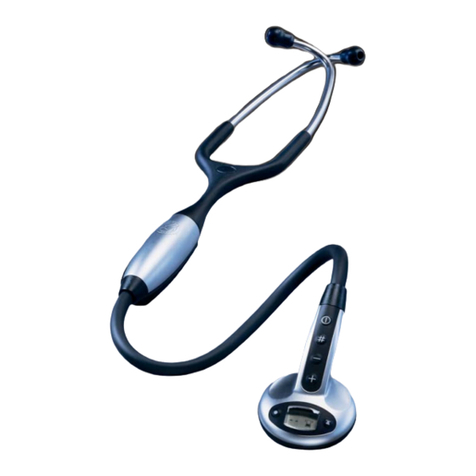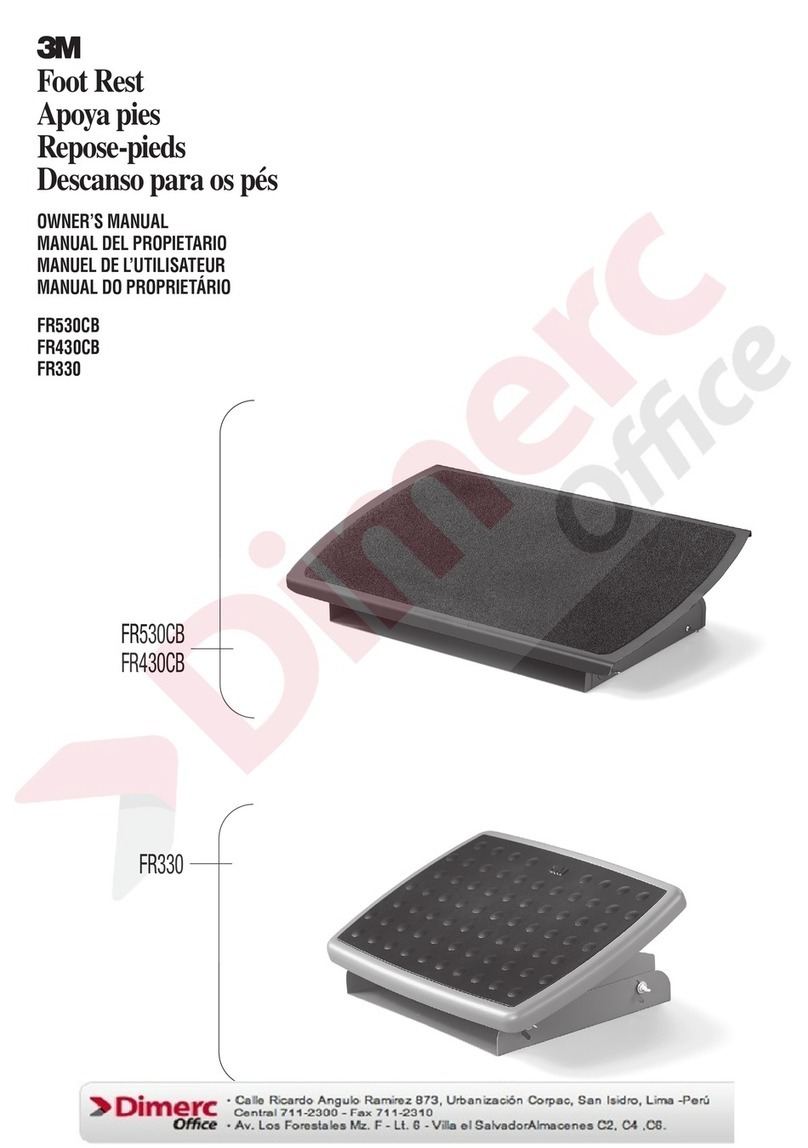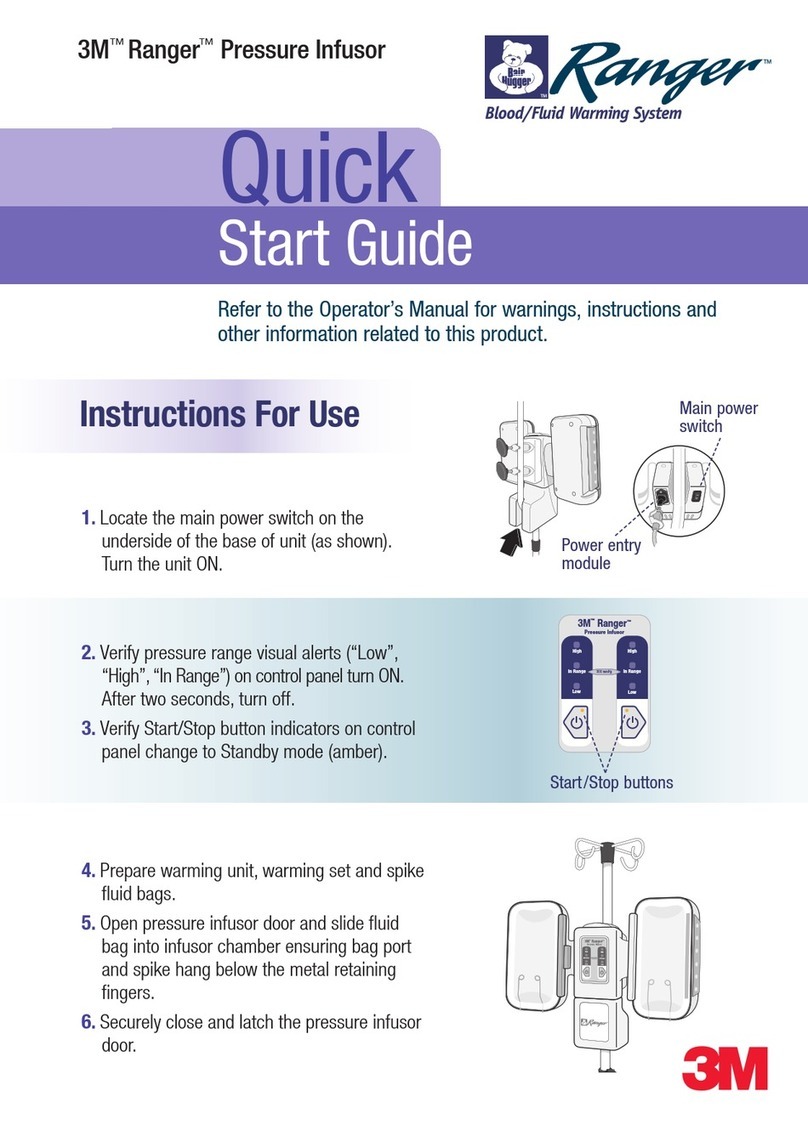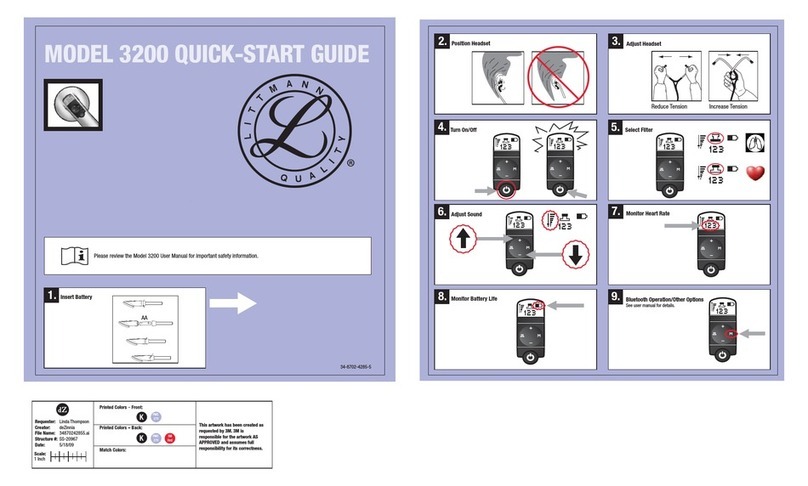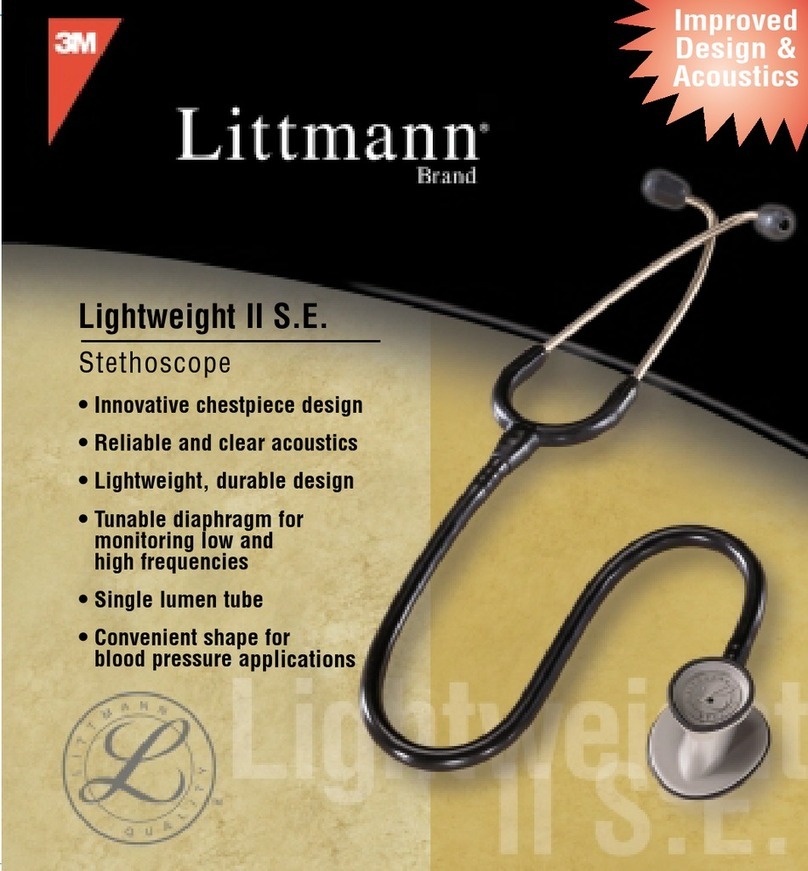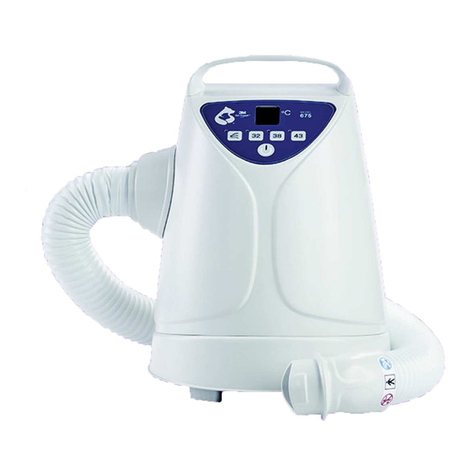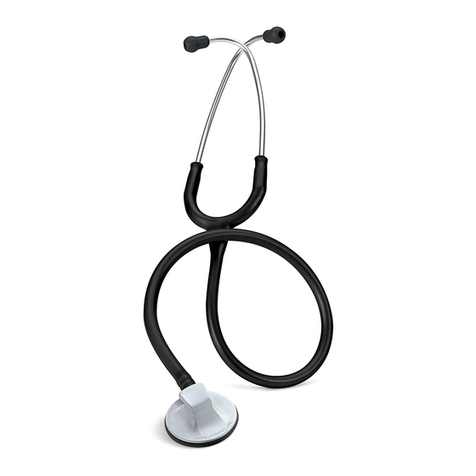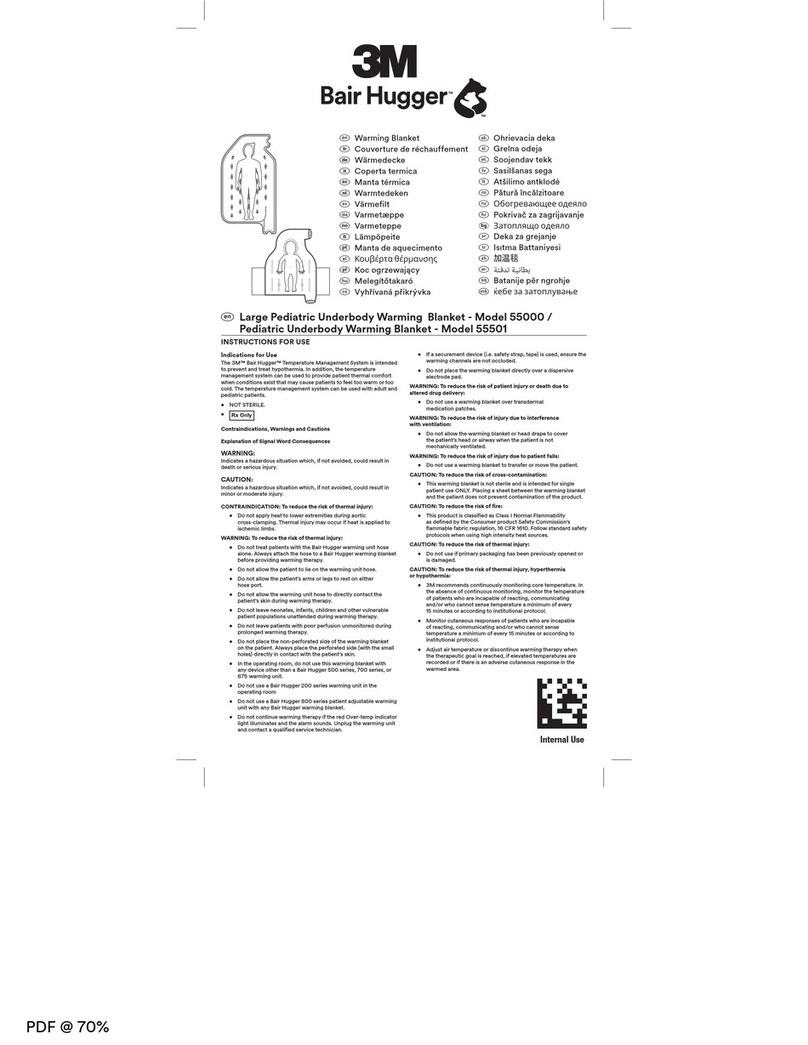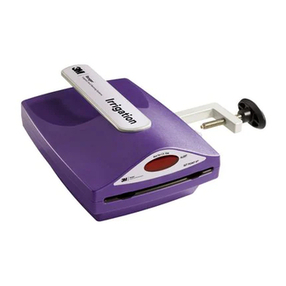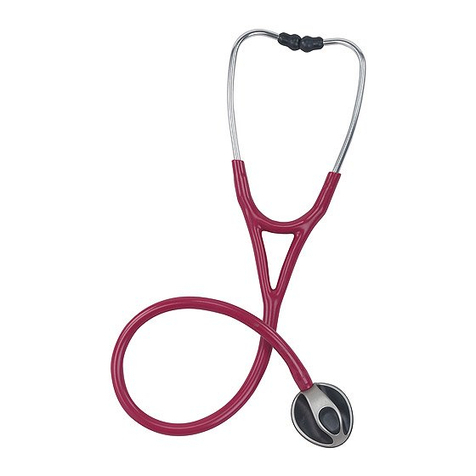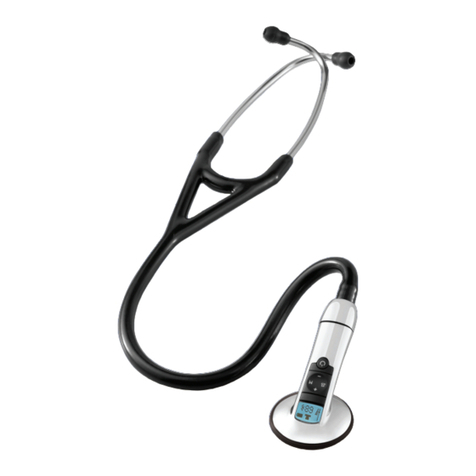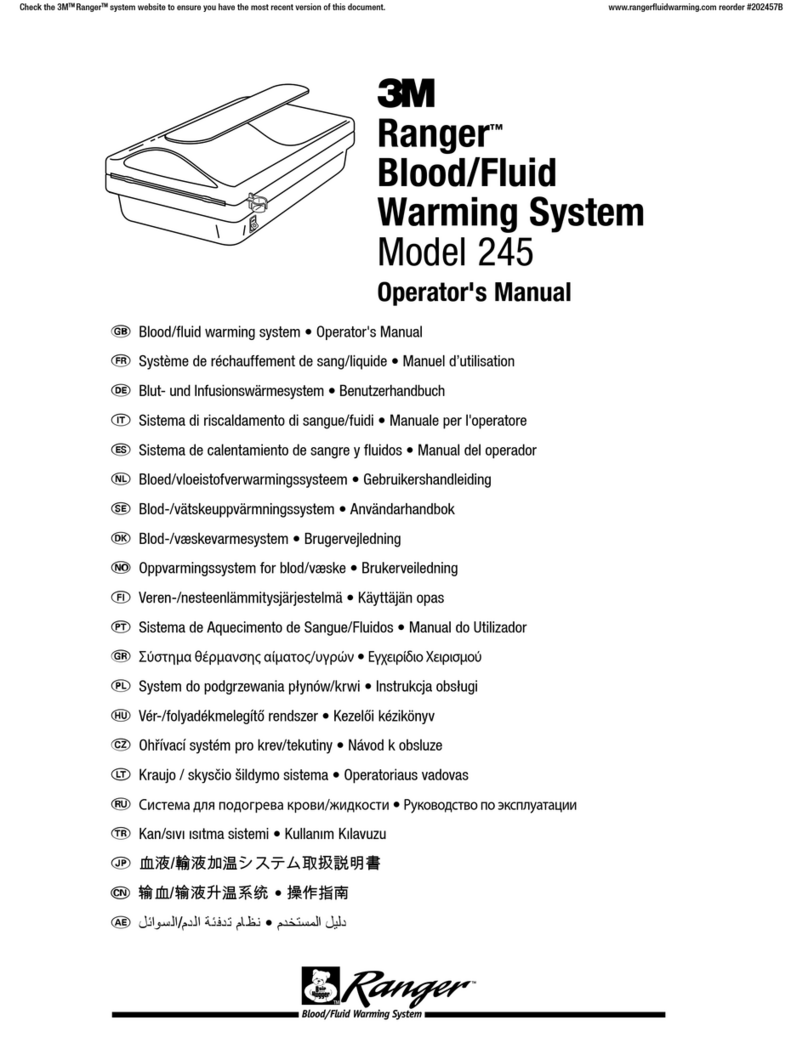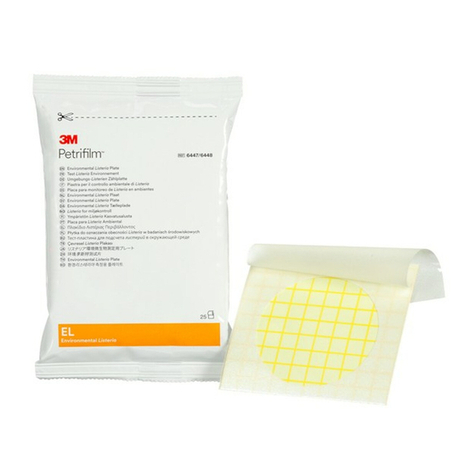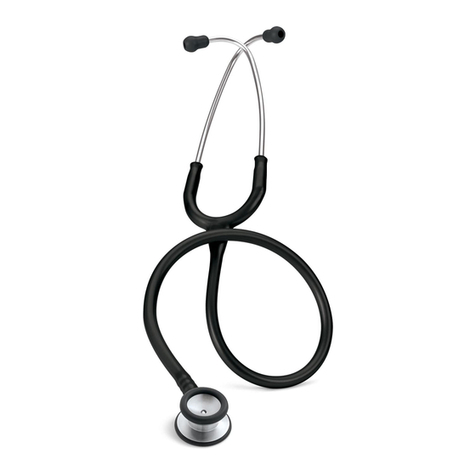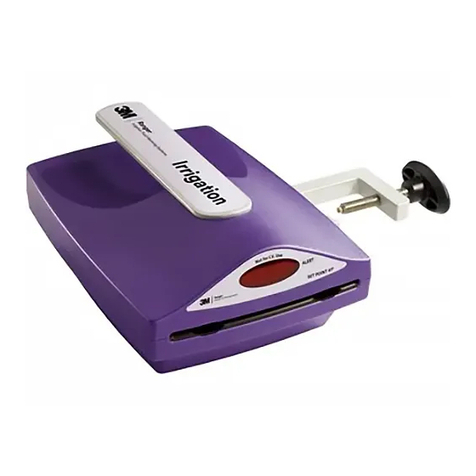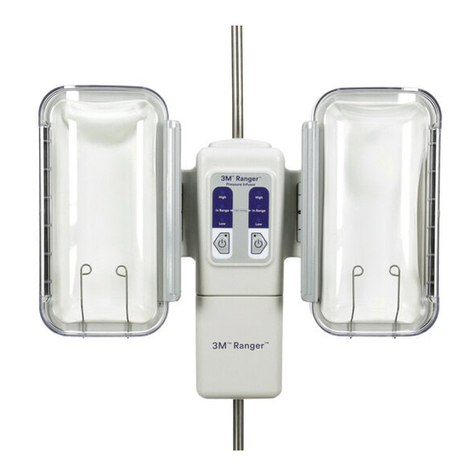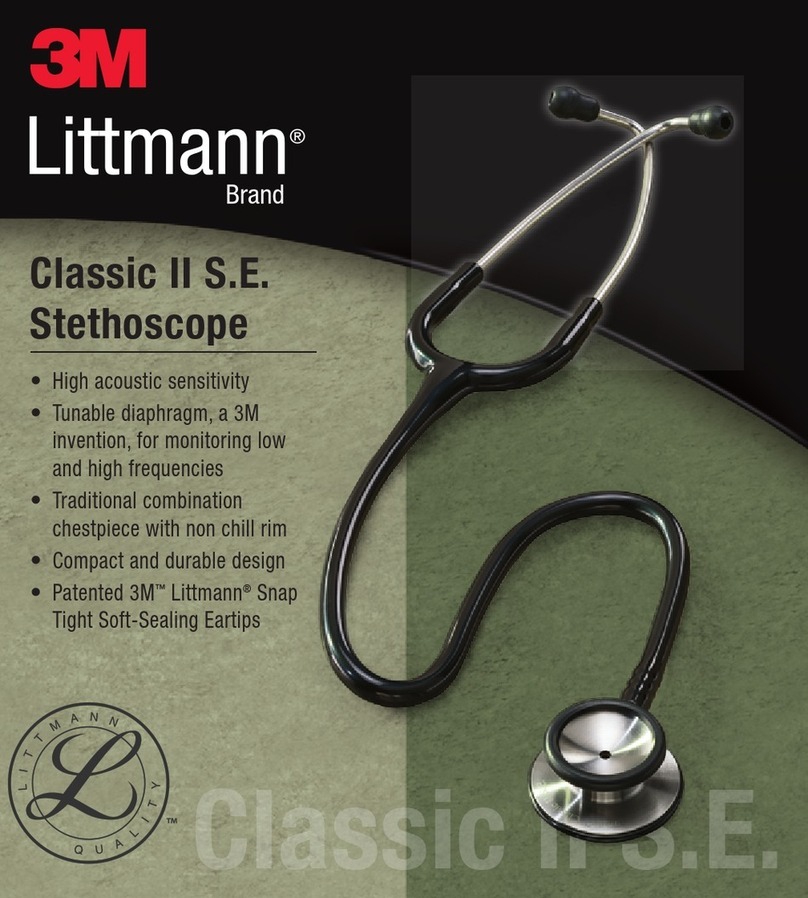Battery Replacement
To insert or replace the battery,
use a coin to loosen the screw on
the underside on the neck of the
chestpiece and slide open the
battery compartment. Remove an
old battery by pushing through
the slot on the backside of the
battery compartment. Insert a
fresh battery with the positive end
toward the eartubes (the plus sign
will be visible in the battery
compartment after insertion).
Slide the compartment closed and
tighten the locking screw.
One battery is enclosed for use
with the Littmann Electronic
Stethoscope.
Use AAA alkaline batteries only
(IEC LR03, 1.5V). Carefully
follow all instructions and
warnings on the battery label and
package.
Remove the battery when the stethoscope will not be
used for several months.
General Use and Maintenance
Cleaning The Chestpiece
Under normal conditions, it is unnecessary to remove
the diaphragm for cleaning. The diaphragm can easily
be cleaned by using an alcohol wipe. If, however, it is
necessary to remove the diaphragm, carefully follow the
instructions below.
Diaphragm Removal
With diaphragm side up, using a thumbnail, lift the
underside portion of the diaphragm out of its designated
groove, and peel it off of the chestpiece. The groove that
holds the diaphragm in place can be cleaned by sliding
the edge of an alcohol swab around the groove. All parts
of the chestpiece can be wiped down with alcohol.
IMPORTANT: The stethoscope should not be immersed
in any solution. Excess liquid used in the cleaning
process can result in moisture getting into the internal
components.
Diaphragm Reassembly
Once the diaphragm is completely dry, insert the
diaphragm into the groove of the rim, starting at one
point, and run your finger around the diaphragm until it
is seated back in the groove.
Other Considerations
• To extend the life of your stethoscope, avoid extreme
heat, cold, solvents and oils.
• Eartips, eartubes, plastic tubing and chestpiece can be
wiped clean with alcohol.
• Do not immerse the stethoscope in any liquid or
subject it to any sterilization process.
• Eartips can be removed for a more thorough cleaning.
• Remove the battery whenever the stethoscope will not
be used for several months.
• Operating range 32˚ to 122˚F (0 to 50˚C), 15 to 95%
relative humidity.
Failure to follow care and maintenance
recommendations could result in damage to the internal
components of the Littmann Electronic Stethoscope.
Internal damage could cause malfunction of the product,
ranging from a slight decrease in auditory response to
complete failure of the product.
If you experience any problems with the electronic
stethoscope, do not attempt to repair it yourself. Please
notify our 3M Health Care Service Center for directions
on shipping and receiving.
Littmann Stethoscope Service and Warranty
Program
Your Littmann Electronic Stethoscope comes with the
finest service and warranty policy in the industry. The
Littmann Electronic Stethoscope Model 3000 is
warranted against any defects in material and
manufacture for a period of two years. If a material or
manufacturing defect is discovered during the warranty
period, repairs will be made without charge upon the
return of the instrument to 3M, except in cases of
obvious abuse or accidental damage.
For maintenance or repair services in the
U.S.A., send your stethoscope directly to:
3M Health Care Service Center
3M Bldg 502-1W-01
3350 Granada Ave N
Suite 200
Oakdale, MN 55128
1-800-292-6298
Include your name, address, and phone number inside
with your stethoscope.
In Canada:
3M Health Care Service Centre
3M Canada Inc.
80 Enterprise Drive South
London, Ontario
Canada N6N1C2
1-800-563-2921
Outside of the U.S.A. and Canada, contact your local
3M subsidiary for maintenance and repair information.
65
